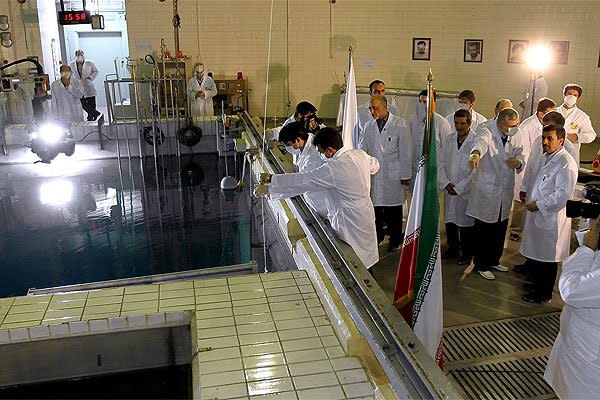 The Envoy
The EnvoyNew IAEA report shows Iran expands nuclear enrichment at Natanz

A new UN atomic watchdog agency report raises concerns about Iran's rapid expansion of enrichment activities, as well as its continued foot-dragging in refusing to answer questions about suspected military dimensions of its nuclear program. But the new assessment also hinted at possible technical problems Iran is experiencing, nuclear experts said.
The 11-page report (.pdf), issued by the Vienna-based International Atomic Energy Agency (IAEA) Friday, comes as the international community is considering how to respond to Iran's expressed readiness to resume negotiations on its nuclear program. It also comes on the heels of the IAEA's complaints over being denied a visit to the Parchin military base on a two-day visit to Iran this week. Agency inspectors want to determine if a building on the site was used to carry out tests of an explosive device.
The agency's latest report shows that Iran has rapidly expanded the number of centrifuges installed at its main Natanz uranium enrichment facility, reaching 9,000 today compared to 6,000 last fall. (It's not clear that all of the installed machines are operating, however, the agency said.) Still, the assessment offers hints that Iran is having trouble with its more advanced centrifuges. Nuclear experts speculated that because of international sanctions Iran may be having trouble procuring the steel needed for the more advanced centrifuge models.
In the meantime, nuclear experts are puzzled and troubled by aspects of Iran's behavior at a more sensitive nuclear enrichment site: the Fordow facility built deep in a mountain near Qom, which is considered less vulnerable to possible military strikes.
Among the concerns for nuclear watchdogs, Iran has repeatedly changed its declared work plan for the facility, which Iran did not disclose until the international community detected it in 2009.
"The sheer fact they keep changing it raises questions about why it was originally built," Paul Brannan, an Iran nuclear expert with the Institute for Science and International Security, told Yahoo News in an interview Friday.
While Iran has placed the outer casings of 2,000 older-generation centrifuges at the Fordow site, according to the new IAEA report, it has not installed the actual machines. Brannan said he found that behavior "strange."
"By only installing the outer casings and not the whole machines, they may be sending a warning about what they intend to do," he said. "Either way, it's not clear whether or not they actually have the capability to install the entire machines in those numbers."
"Is it a bluff?" he continued. The Iranians "know how significant Fordow is. If they put in the two thousand machine casings, but not the actual machines, it is sending a signal."
Israel considers Iran's enrichment activities at Fordow a particular cause of alarm, because it believes the facility is less vulnerable to Israeli air strikes given its placement in a fortified bunker in a mountain.
Other popular Yahoo! News stories:
• IAEA ends Iran visit with no agreement
• 'Friends of Syria' mull peacekeeping mission at crisis conference
• US officials express concerns over arming Syrian opposition
Want more of our best national security stories? Visit The Envoy or connect with us on Facebook and on Twitter.
